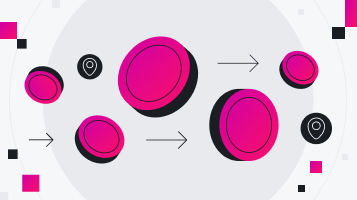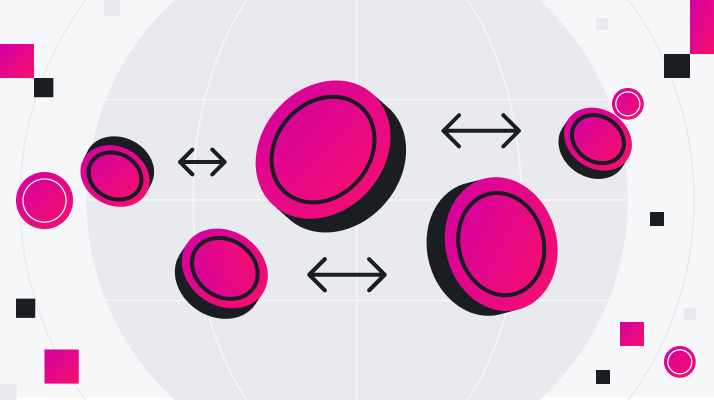How To Become a Top Amazon Seller in 8 Simple Steps

Ecommerce has been on the rise for well over a decade, but the pandemic ushered in a wave of mass adoption as supply chain constraints and public health concerns inspired people to embrace online shopping. Amazon, Walmart, Shopify, Etsy, and several other eCommerce platforms saw explosive growth as people launched new online businesses to supplement their income.
As we move into 2022, many people wonder: is it too late to get started in eCommerce? Fortunately, 2022 is the perfect time to launch an eCommerce business – and one of the best places to get started is on Amazon. But how can an aspiring Amazon business owner get started in 2022?
1. Conduct Thorough Market and Product Research
When getting started, sellers need to align their skills, resources, network, and interests to build the perfect eCommerce opportunity. Making a plan requires careful research:
What underserved niche will your business fit into?
How will you find your customers?
What type of branding, packaging, and fulfillment is right for you?
How quickly do you want to grow?
What marketing tools will you need?
What challenges will your business face? How will you overcome them?
How will you make your products?
How will you fund your new business?
2. Come Up With A Strategy
After your research, you need to make a plan. Becoming an Amazon seller lets you stay nimble and move quickly, but you still need a strong strategy to be successful. What type of business will you build on Amazon? New sellers have a few options:
Resellers
Resellers can start selling products on Amazon quickly with retail arbitrage or a wholesale model. Buy low and sell high, and focus on products that already have a robust infrastructure and following, like designer clothing, industrial tools, and raw materials. A reseller model allows you to narrow your focus to inventory management and marketing, but the tradeoff is typically lower profit margins.
There are a few ways to become a successful reseller on Amazon:
Purchase wholesale products in large quantities and resell in smaller packages.
Purchase private label finished goods and resell them under your own branding, either through a wholesale model or dropshipping.
Brand Owners
Brand owners design, create, store, and market their products from start to finish. This high-risk, high-reward strategy takes lots of time to build. Don’t be discouraged, though! Every big brand started as an idea – your new product might be the next big thing! A strong strategy will make sure your products launch smoothly and bring steady growth throughout 2022.
Choose Your Product Categories and Factor Your Costs
No matter what method you choose, you’ll need to make some big decisions. Will you invest in eco-friendly packaging? What types of products will you sell? Will you stick to specific product categories, like apparel or tools, or will you take a broad approach and sell a wide range of items? How will you price your items to account for Amazon referral fees, product costs, packaging costs, shipping costs, and marketing costs?
3. Figure Out Your Inventory Flow and Fulfillment Procedures
Starting an Amazon business from home might require you to make a few adjustments, depending on your eCommerce inventory flow. You can choose to store your raw materials and finished goods at home or in a nearby warehouse, or you can send your products to an Amazon Fulfillment Center to have them handle storage and fulfillment while you can focus on marketing and customer service.
Manage Your Amazon Inventory From Home
Many beginner Amazon businesses start by storing inventory and fulfilling orders from home. The downside to working out of your home is that it can be tough to stay organized without some strategic planning:
Dedicate a bedroom or closet dedicated to raw materials and set up a staging area near the front of your home.
Always plan ahead. Order raw materials before you run out so that you can fulfill every order on time. Prepare for increased demand during peak shopping seasons, like Valentine’s Day, early Fall, and the winter holidays.
Take inventory often to prevent errors.
Join the Fulfillment by Amazon (FBA) Program
Amazon sellers who are ready to scale should consider becoming FBA sellers. As an FBA seller, you can outsource the bulk of inventory management and order fulfillment to Amazon’s global infrastructure while you focus on growing the business and taking care of your customers. Amazon recently updated its FBA fees to reflect its pandemic growth, so 2022 is a great time to get started as an FBA Seller.
4. Create Your Amazon Seller Account and Choose a Selling Plan
After you’ve done your research and come up with a strategy, you’ll need to choose your selling plan. Amazon offers two options for new sellers: the Individual Plan and the Professional Plan.
Individual Plan
The Individual Plan is great for beginner sellers or people who start their Amazon business as a side hustle. The Individual Plan costs $0.99 every time you sell an item, so if you plan to sell more than 40 items, it’s worthwhile to upgrade to the Professional Plan.
Professional Plan
The Professional Plan is best for Amazon businesses that plan to grow quickly. If you anticipate selling more than 40 items per month, you’ll save lots of money in the long run by choosing the Professional Plan. The Professional Plan charges sellers a flat fee of $39.99 per month, no matter how many items you sell during that month.
Don’t Forget the Referral Fees and FBA Fees
Amazon will still charge a referral fee on every sale, no matter which plan you choose. Also, if you opt to send your products to Amazon as part of the Amazon FBA program, you’ll need to account for those fees in your business plan as well.
5. Add Your Products
So you’ve made a plan and created your Amazon Seller Central account. Now, it’s finally time to list your products! Amazon product listings are comprised of a few primary components:
Product Name: Choose a name that informs and entices
Product ID: This is a product number assigned by Amazon
Brand name: This is the brand name that the item will be sold under – this should be the name of your store
Manufacturer: This is the name of the brand that physically created the product
Size: This is the physical dimensions of the product, expressed in units or universal sizing (“3 inches” or “Extra Large” or “1 TB”)
Color: This is the color(s) of the item
Unit Count: This is the number of units included in the product.
Unit Count Type: This defines the unit counted above.
Product Features: These are bullet points that Amazon highlights near the top of the product listing. Briefly describe the best features of your product here.
Product Description: This is where you describe your product to customers. Remember to entice and inform!
Backend Keywords and Tags: This is additional space to describe your product to Amazon behind the scenes. Customers don’t see this text.
Photographs: Your photographs should show what your product looks like, how it can be used, and any variations available to your customers
6. Optimize Your Product Listings
Simply adding basic information about your products isn’t enough. Once you’ve built your catalog, it’s important to compare your listing to your competitors to explore marketing opportunities you may not have initially thought of.
For this phase, if you don’t consider yourself a solid persuasive writer, it’s wise to hire a professional copywriter who can refine your product listings to boost your SEO performance and attract more organic attention to your listings, then convert more sales by winning customers over with deeply informative text and irresistible calls to action.
7. Build Your Brand
Marketing and branding are some of the most fun and challenging parts of building your Amazon business. In this phase, you create branding assets and strategize a digital marketing flywheel that will help you cut through the noise of Amazon’s crowded eCommerce platform.
Develop a Social Strategy
Spend some time conceiving a social media strategy that integrates text, photo, and video content on all the major platforms. Facebook, Instagram, Twitter, YouTube, Pinterest, TikTok, and even your own website all present unique opportunities for brands, so spend some time exploring which platforms are best for you and what types of content perform well on those platforms.
Email Isn’t Dead
Use a platform like Mailchimp or ConvertKit to build an email list ASAP. Even today, email drives one of the highest rates of return out of all types of digital marketing. Find a strategist who can craft killer headlines and valuable email content, and reach out to your customers (and potential customers) often with education, entertainment, advice, and offers.
Customer Reviews Are Key
Positive customer reviews are one of the most critical conversion tools for Amazon sellers. Incentivize good customer reviews by including reminders in your packaging and providing excellent customer service before, during, and after every purchase.
8. Invest In Your Growth
Launching an Amazon business is an excellent way to revolutionize your life in 2022, but it takes hard work and flexible funding. The hard work is up to you, but when it comes to cash flow, Payability has you covered!
Payability empowers Amazon sellers with flexible cash flow aids for every business model. Don’t let slow money hold back your eCommerce growth in 2022! Instant Access provides daily Amazon payouts for marketplace sellers, and Instant Advance gives qualified sellers immediate access to up to $250K in growth funding.
Payability’s tools are fast and convenient:
No Credit Check: Apply online with your Seller account and get approved the same day.
Get Funds On Your Schedule: Start accessing your eCommerce funds in as little as one business day. Get your money when you need it with Instant Transfer, Same Day ACH, or wire.
Get Cash Back: Earn up to 2% cash back on every purchase you make with the Payability Seller card!
Get started with Payability today if you’re ready to grow your Amazon business!
Share

Jack has over five years of Business Development and Partnerships experience at growth start-ups. Prior to joining the Payability team, Jack worked in Business Development at the real estate company SquareFoot, where he was instrumental in advising Private Equity and VC-backed companies on their real estate footprints in NYC. He holds dual degrees in Economics and Sport Management from Southern Methodist University in Dallas, Texas.
Related Posts

How to use Airwallex for automated insurance payouts
•5 minutes

Wallets, cards, and the flywheel effect: the formula for marketpl...
•6 minutes
